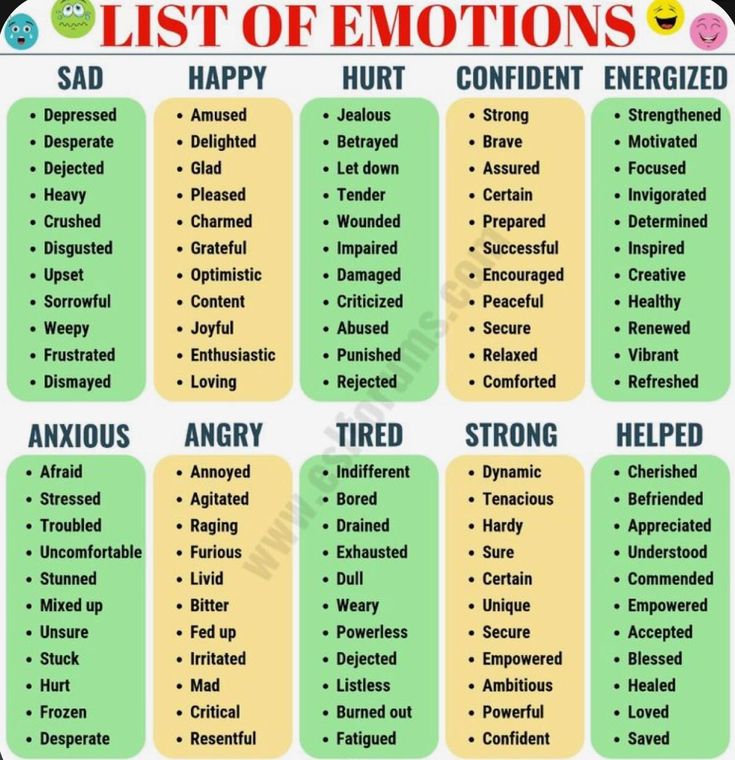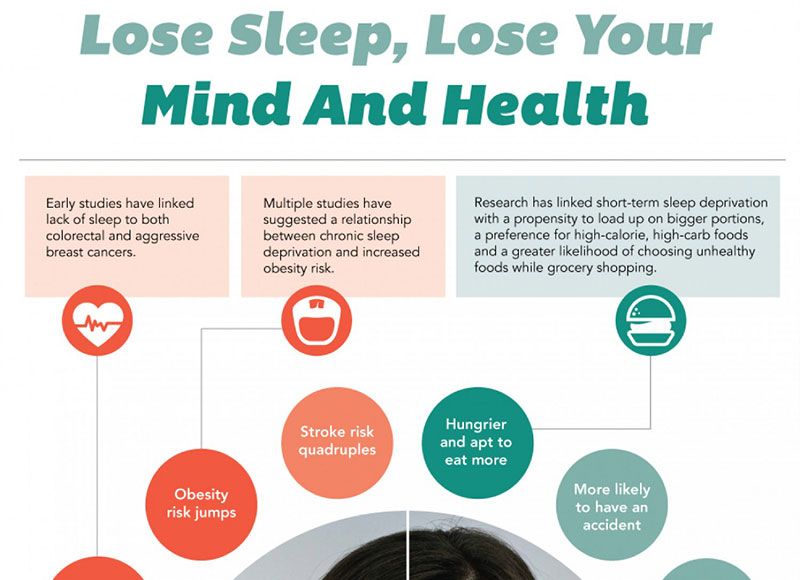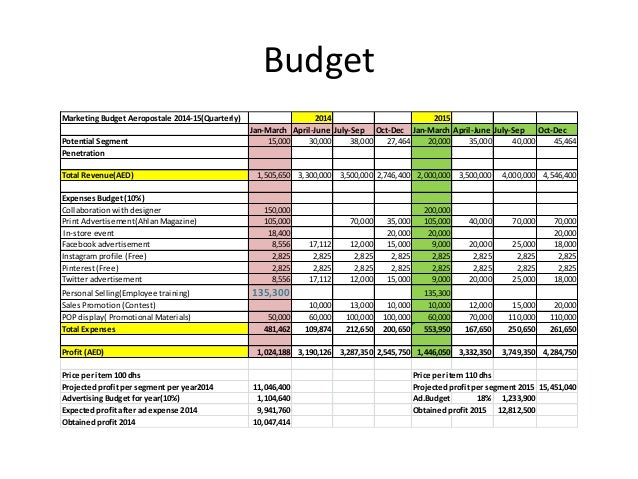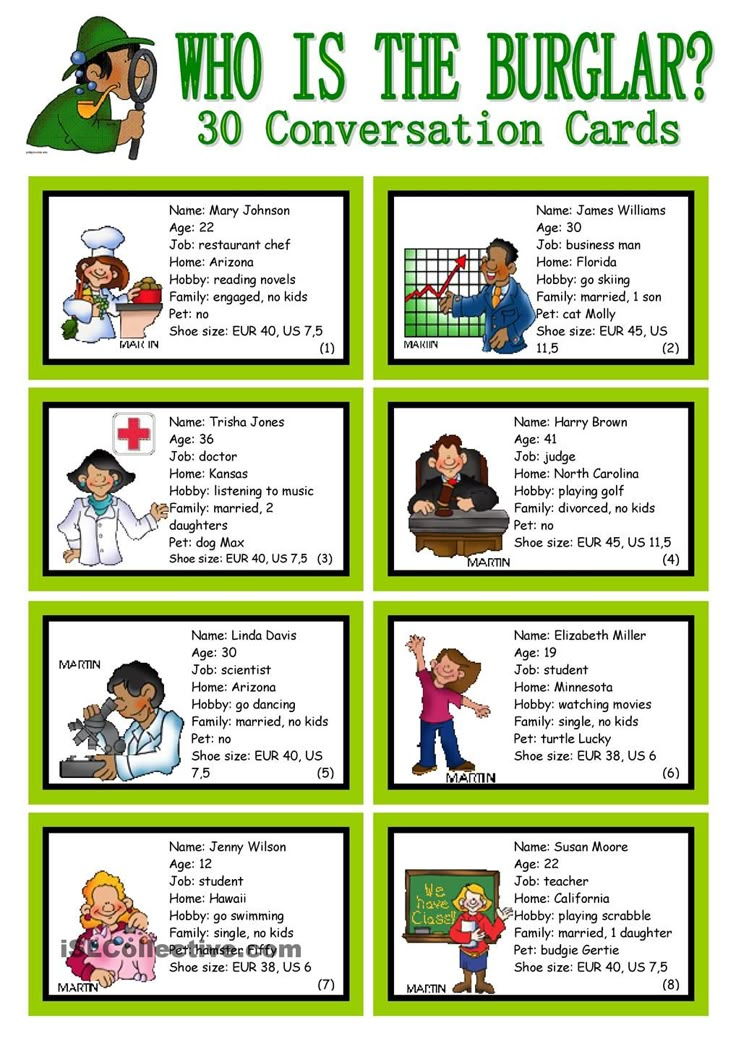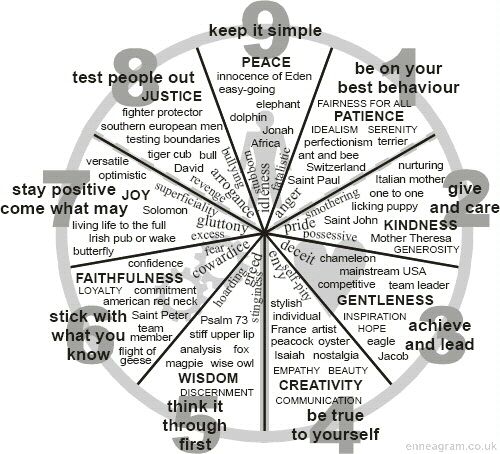List of automatic thoughts
Assessment - Cognitive Therapy NYC
From the Jason Aronson Collection
Cognitive Assessment from the book
Cognitive Therapy: Basic Principles and Applications
Robert Leahy
Intake
The cognitive therapy intake is different from traditional intake interviews. The therapist is not only interested in the patient’s symptoms and life history but also in his interpretation of events. For example, the patient may report that he felt depressed and hopeless after the breakup of a relationship and that these feelings precipitated the current major depressive episode. The therapist will inquire as to the meaning of the breakup. Therapist: You said you felt depressed and hopeless after you and Susan broke up. I am going to give you some sentences and I want you to finish them with the first thoughts that come to mind. “I felt depressed when we broke up because I thought .
Patient: I’ll never be able to be with her again.
Therapist: And if I can never be with her again I feel depressed because I
think . . .
Patient: I can never be happy with anyone else.
Assessment
The cognitive assessment attempts to elicit the patient’s idiosyncratic interpretations of events. Unfortunately many clinicians believe they know what the event meant to the patient, but they may be completely wrong. For example, different patients might become depressed because the breakup signifies that they are unlovable, that they will not be able to care of themselves, or that they cannot trust their judgment. The patient’s interpretation is key, for it will become one of the initial targets for therapy.
The cognitive therapist will try to elicit automatic thoughts, which are thoughts that come spontaneously, seem plausible to the patient, and are associated with negative affect. Typical automatic thoughts are “I’ll never be happy” or “I’ll lose control” or “I’m a failure.” More general, pervasive thoughts are called underlying assumptions: these refer to “should statements” (e.g., “I should get the approval of everyone”) and “if-then statements” (e. g., “If I don’t get approval, then I’m a failure”).
g., “If I don’t get approval, then I’m a failure”).
Many patients (especially anxious patients) report having visual images when they are anxious. These are not hallucinations, but rather images that entail the belief that something dangerous will happen. For example, a panic disorder patient had the image that she would be driving across a bridge, lose control, and see herself plummeting to her death. Positive images are often instructive because they indicate the patient’s belief about how problems might be satisfactorily resolved. When the therapist asked a 45-year-old single woman what positive visual image she could produce, she began to describe herself in a bedroom holding a man she loved. This then elicited crying because she believed this would never happen. A 62-year-old married woman, reporting almost forty years of marital discord and dysthymia, had the “positive” image of her husband and herself driving on the highway, getting into an accident where she is thrown free, while he is killed.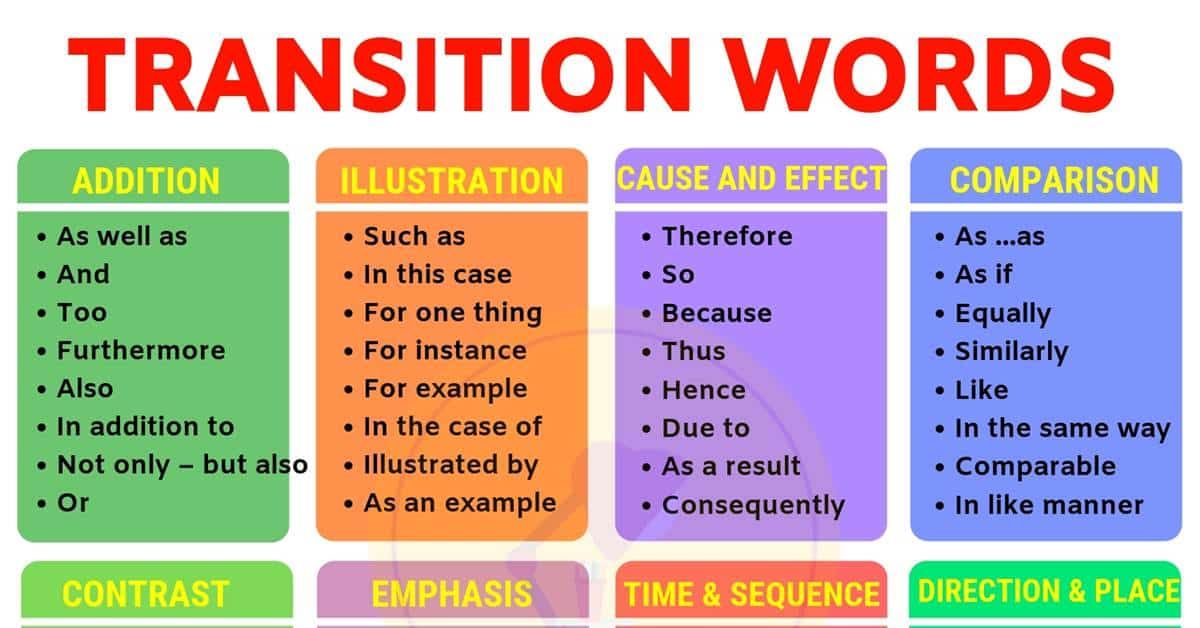 This dramatic image was positive for her: “At last I would be free of him . . . and I would not have to make any decisions.” Interestingly, her image allowed her to “kill” her husband without taking responsibility for her own hostility.
This dramatic image was positive for her: “At last I would be free of him . . . and I would not have to make any decisions.” Interestingly, her image allowed her to “kill” her husband without taking responsibility for her own hostility.
Although some may believe that cognitive therapy involves the power of positive thinking, this is an incorrect evaluation. Many automatic thoughts may be true (for example, the individual may predict that he will be rejected or fail the exam) and he may be right. The question to be addressed is, “If you are rejected at the party, what would that mean to you?” The patient might respond that the future will be filled with other rejections.
Testing Automatic Thoughts
Automatic thoughts occur spontaneously, seem plausible to the patient, and are associated with negative affect. We can say that automatic thoughts are assessments or interpretations of events. They are stipulations or propositions: “I’ll never be happy again,” “I am a failure,” or “It’s all my fault.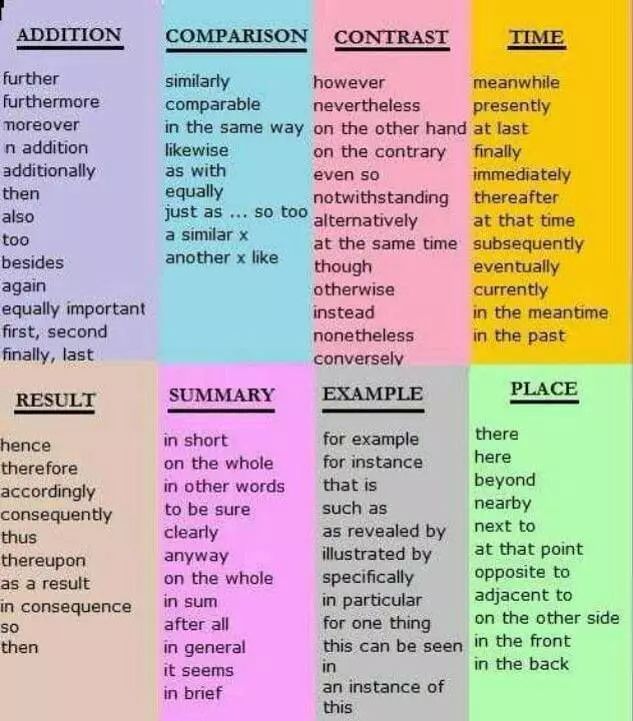 ” They may be either true or false. Automatic thoughts are distinguished from feelings or emotions such as sadness, anxiety, fear, or hopelessness. Feelings or emotions have the same status as sensations; they are indisputable. For example, it would make little sense to say, “Even though you feel anxious, you are not anxious.” The therapist does not test or challenge whether the patient has these feelings; rather, she examines the thoughts that give rise to the feelings. For example, “I feel sad because I think I’ll never succeed at anything.” The therapist assists the patient in examining the proposition, “I’ll never succeed at anything.” Consider the following: you are walking along a dark alley in the city and you hear the footsteps of two large men coming from behind. How do you feel? Your feeling anxiety, indifference, or even elation will depend on your interpretation of the meaning of these footsteps. You might have the thought, “I’m going to be mugged!” which will lead to the feeling of fear and the behavior of escape.
” They may be either true or false. Automatic thoughts are distinguished from feelings or emotions such as sadness, anxiety, fear, or hopelessness. Feelings or emotions have the same status as sensations; they are indisputable. For example, it would make little sense to say, “Even though you feel anxious, you are not anxious.” The therapist does not test or challenge whether the patient has these feelings; rather, she examines the thoughts that give rise to the feelings. For example, “I feel sad because I think I’ll never succeed at anything.” The therapist assists the patient in examining the proposition, “I’ll never succeed at anything.” Consider the following: you are walking along a dark alley in the city and you hear the footsteps of two large men coming from behind. How do you feel? Your feeling anxiety, indifference, or even elation will depend on your interpretation of the meaning of these footsteps. You might have the thought, “I’m going to be mugged!” which will lead to the feeling of fear and the behavior of escape.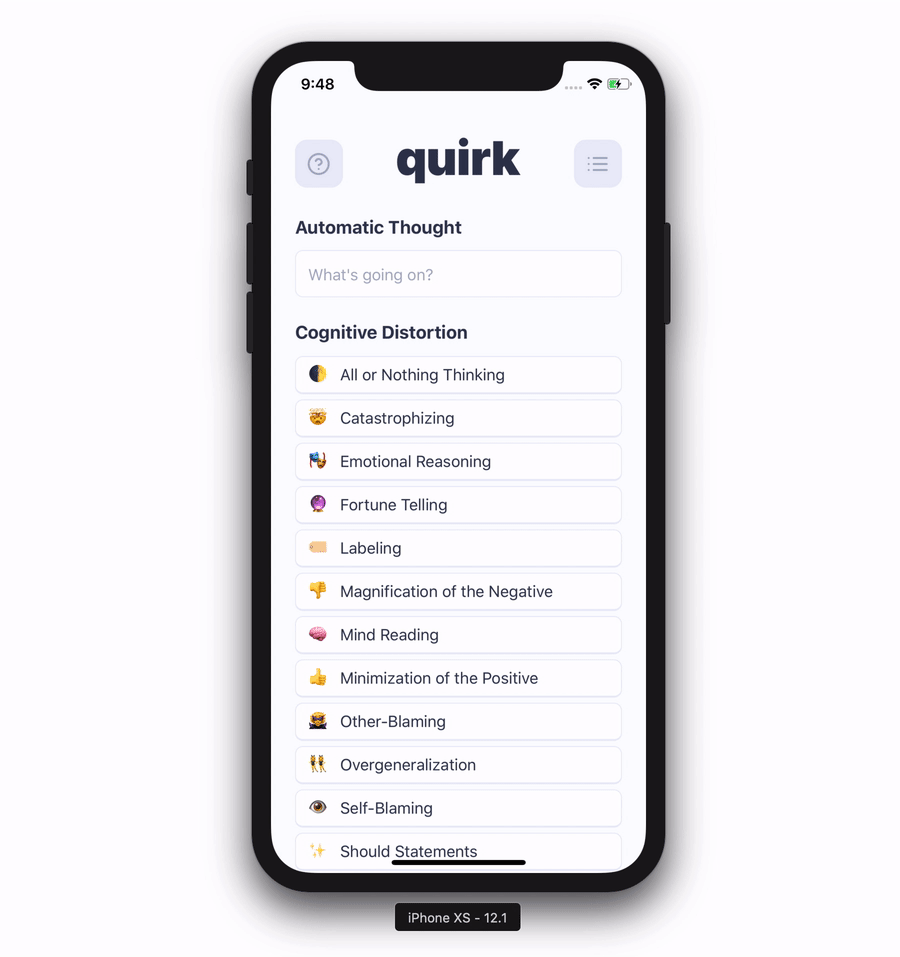 Or you could think, “It’s just two businessmen leaving a restaurant,” in which case you will have a feeling of indifference and your behavior will remain the same. You will continue your walk. Or you could have the interpretation that these are friends of yours from the psychology convention, in which case your feeling will be pleasure, and your behavior might be to turn around and try to join them. The point is that the same situation may give rise to any number of thoughts and feelings. The question is, “Which thought is valid?”
Or you could think, “It’s just two businessmen leaving a restaurant,” in which case you will have a feeling of indifference and your behavior will remain the same. You will continue your walk. Or you could have the interpretation that these are friends of yours from the psychology convention, in which case your feeling will be pleasure, and your behavior might be to turn around and try to join them. The point is that the same situation may give rise to any number of thoughts and feelings. The question is, “Which thought is valid?”
To determine which thought is valid requires examining the evidence and your reasoning. For example, you could examine the evidence by turning around and seeing who is behind you. Cognitive therapy largely consists in the elicitation and examination of the automatic thoughts and assumptions that people display when they are feeling anxious, depressed, or angry. The negative thoughts of the patient may be categorized into the following distortions:
Cognitive Distortions
- Mind reading: You assume you know what people think without having sufficient evidence of their thoughts.
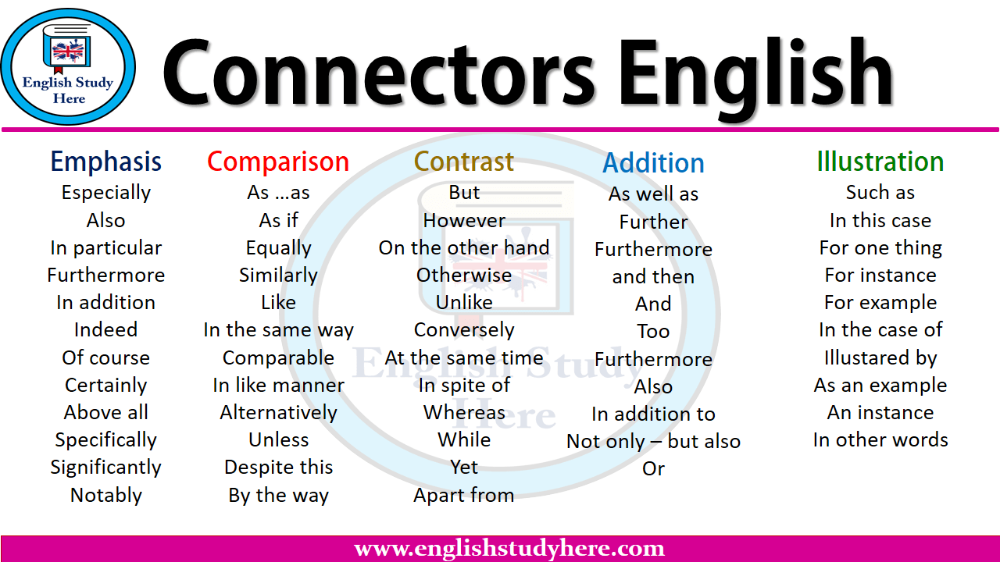 “He thinks I’m a loser.”
“He thinks I’m a loser.” - Fortune telling: You predict the future; things will get worse or there is danger ahead. “I’ll fail that exam” and “I won’t get the job.”
- Catastrophizing: You believe that what has happened or will happen is so awful and unbearable that you won’t be able to stand it. “It would be terrible if I failed.”
- Labeling: You assign global negative traits to yourself and others. “I’m undesirable” or “He’s a rotten person.”
- Discounting positives: You claim that the positives you or others attain are trivial: “That’s what wives are supposed to do, so it doesn’t count when she’s nice to me.” “Those successes were easy, so they don’t matter.”
- Negative filter: You focus almost exclusively on the negatives and seldom notice the positives. “Look at all the people who don’t like me.”
- Over generalizing: You perceive a global pattern of negatives on the basis of a single incident.
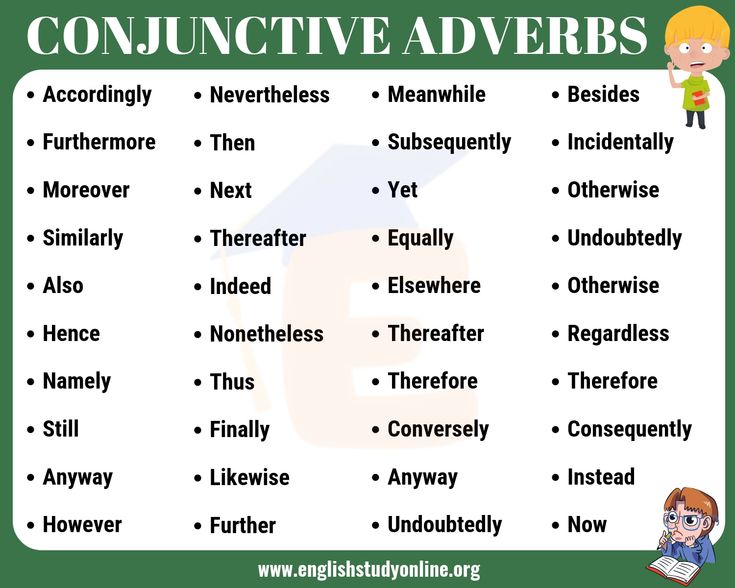 “This generally happens to me. I seem to fail at a lot of things.”
“This generally happens to me. I seem to fail at a lot of things.” - Dichotomous thinking: You view events or people in all-or-nothing terms. “I get rejected by everyone” or “It was a waste of time.”
- Shoulds: You interpret events in terms of how things should be rather than simply focusing on what is. “I should do well. If I don’t, then I’m a failure.”
- Personalizing: You assign a disproportionate amount of blame to yourself for negative happenings and fail to see that certain events are also caused by others. “The marriage ended because I failed.”
- Blaming: You focus on the other person as the source of your negative feelings, and you refuse to take responsibility for changing yourself. “She’s to blame for the way I feel now” or “My parents caused all my problems.”
- Unfair comparisons: You interpret events in terms of standards that are un-realistic; for example, you focus primarily on others who do better than you and find yourself inferior by comparison.
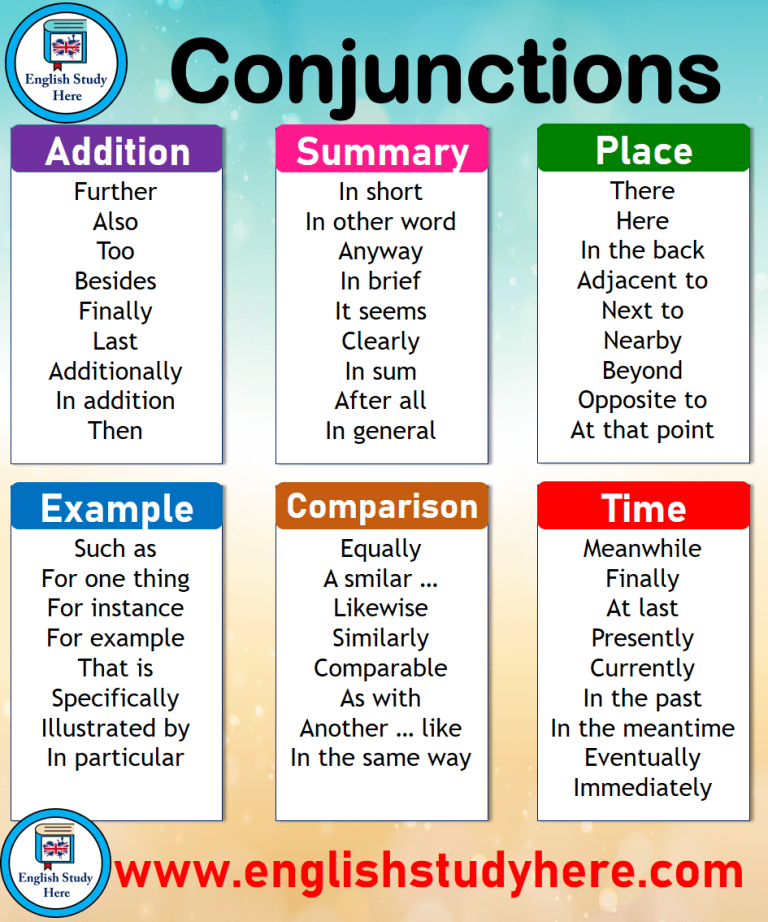 “She’s more successful than I am” or “Others did better than I on the test.”
“She’s more successful than I am” or “Others did better than I on the test.” - Regret orientation: You focus on the idea that you could have done better in the past, rather than on what you can do better now. “I could have had a better job if I had tried” or “I shouldn’t have said that.”
- What if?: You keep asking a series of questions about “what if” something happens, and fail to be satisfied with any of the answers. “Yeah, but what if I get anxious? Or what if I can’t catch my breath?”
- Emotional reasoning: You let your feelings guide your interpretation of reality; “I feel depressed, therefore my marriage is not working out.”
- Inability to disconfirm: You reject any evidence or arguments that might contradict your negative thoughts. When you think, “I’m unlovable,” you reject as irrelevant any evidence that people like you. Consequently, your thought cannot be refuted: “That’s not the real issue.
 There are deeper problems. There are other factors.”
There are deeper problems. There are other factors.” - Judgment focus: You view yourself, others, and events in terms of evaluations of goodbad or superiorinferior, rather than simply describing, accepting, or understanding. You are continually measuring yourself and others according to arbitrary standards, finding that you and others fall short. You are focused on the judgments of others as well as your own judgments of yourself. “I didn’t perform well in college” or “If I take up tennis, I won’t do well” or “Look how successful she is. I’m not successful.”
Testing and Challenging Automatic Thoughts
In evaluating and testing automatic thoughts and maladaptive assumptions or rules, the therapist may be guided by a set of questions he can pose to the patient. What if the automatic thought is true? The therapist should keep in mind that some automatic thoughts may be partly or even largely true. Cognitive therapy is not the power of positive thinking or simply the refutation of every negative belief that the patient has.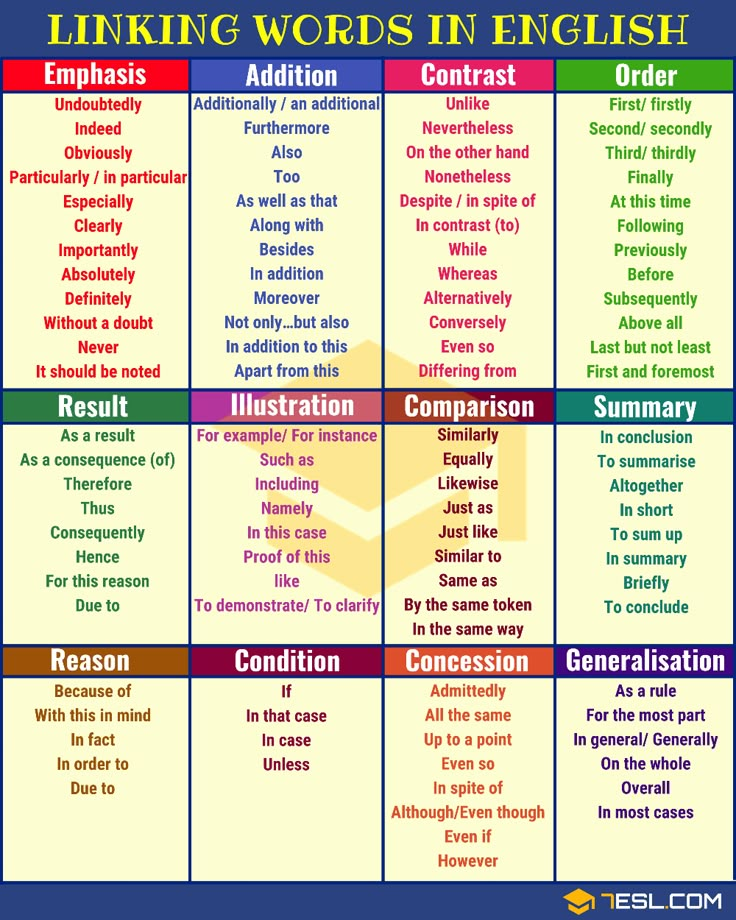 When automatic thoughts are true, then the therapist may determine if behavioral changes are indicated or if the patient’s underlying assumptions need to be modified. For example, a woman who had been depressed for more than two years since she was fired had the automatic thought that she interviewed very poorly. The therapist and the patient collected information about her interviews and, indeed, she had been rejected at every one of them. The therapist then engaged her in a behavioral rehearsal where she practiced her interview with the therapist during the session. It was immediately apparent that she was correct, she appeared defensive, self-absorbed, and too eager to make an impression. Therapist: It appears that your automatic thought is valid. You do come across poorly in the interview. Patient: See, it’s just as I expected. I’ll never get a job. Therapist: No, actually this was a great discovery. We now know exactly what you have to change in order to get a job. We now have to design good interviewing skills.
When automatic thoughts are true, then the therapist may determine if behavioral changes are indicated or if the patient’s underlying assumptions need to be modified. For example, a woman who had been depressed for more than two years since she was fired had the automatic thought that she interviewed very poorly. The therapist and the patient collected information about her interviews and, indeed, she had been rejected at every one of them. The therapist then engaged her in a behavioral rehearsal where she practiced her interview with the therapist during the session. It was immediately apparent that she was correct, she appeared defensive, self-absorbed, and too eager to make an impression. Therapist: It appears that your automatic thought is valid. You do come across poorly in the interview. Patient: See, it’s just as I expected. I’ll never get a job. Therapist: No, actually this was a great discovery. We now know exactly what you have to change in order to get a job. We now have to design good interviewing skills.
The therapist and the patient developed behavioral targets for interviewing, a list of do’s and don’ts that she practiced at home using a tape recorder and rehearsed in session with the therapist. On her next two interviews she was offered jobs and now, ten years later, she has been continuously employed in a highly competitive job. The therapist should not rely on one or two challenges to a thought, since the automatic thought may have been practiced for decades. We recommend focusing on just a few central automatic thoughts per session, utilizing a variety of techniques on each thought. The following are commonly effective challenges to automatic thoughts:
Twelve Questions to Ask About an Automatic Thought
- Which cognitive distortion are you using? Are you engaging in labeling, all-or-nothing thinking, catastrophizing?
- How much do you believe in this thought?
- What are the advantages and disadvantages of this thought?
- What is the evidence for and against this thought?
- What is the quality of the evidence you are using? Could you convince a jury that your negative interpretation is the best or only valid one?
- What if the thought is true? Why would that bother you?
- Even if the thought is true, could you think of other positive behaviors that you might engage in despite this?
- If someone else had this problem, what advice would you give him?
- If someone else had this problem, would you judge him as negatively as you judge yourself? Why or why not?
- How many times in the past have you had this kind of thought? Have you ever been wrong?
- Is there something you could do to determine if this thought is true?
- If the thought is true, are there some things you can do to improve the situation?
9 Most Common Automatic Negative Thoughts That Make Life Harder – Paul Elmore
Most negative thinking is automatic (Automatic Negative Thoughts—ANTS) and goes unnoticed.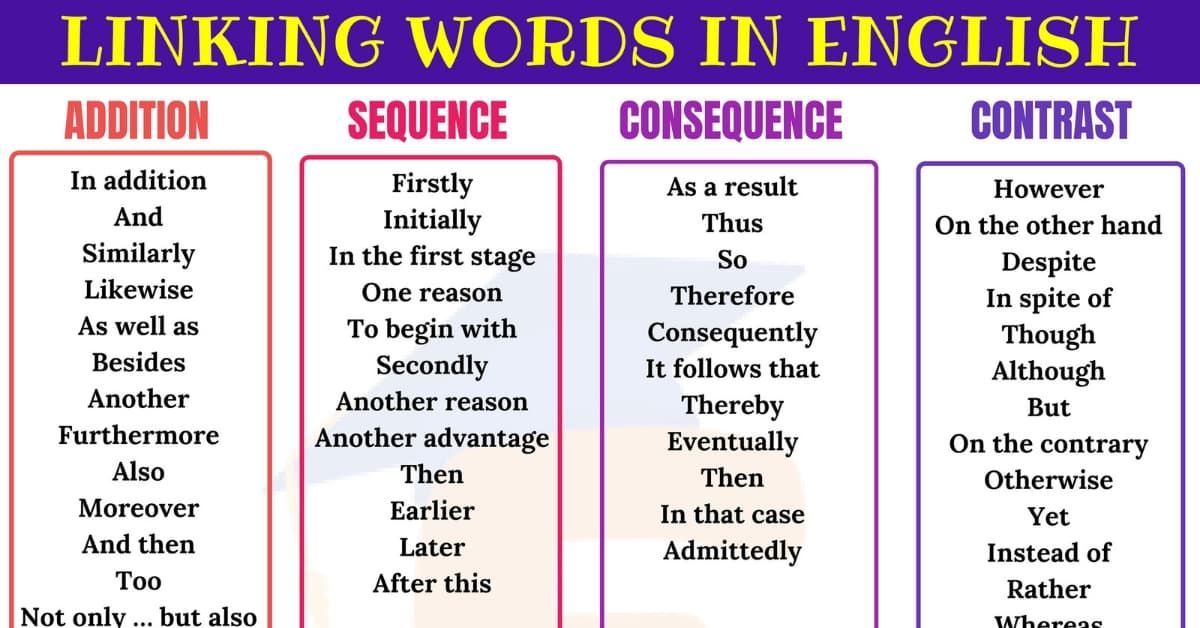 You’re not really choosing how to respond to a situation, its being chosen for you by your bad brain habits. To find out what is really true you need to question your thinking patterns.
You’re not really choosing how to respond to a situation, its being chosen for you by your bad brain habits. To find out what is really true you need to question your thinking patterns.
Below are 9 of the the most common ANTS people have. Even though we slip into each one of these at some time or another, we usually gravitate towards one or two main ANTS in our lives. By catching what the negativing thinking pattern is, we start to have the ability to chose our responses in life and live a little more productively.
1. “Always/Never” Thinking
This happens when you think something that happened will “always” repeat itself, or that you’ll “never” get what you want. All-or-never words like always, never, no one, every one, every time, everything are usually wrong.
2. Focusing On The Negative
This occurs when your thoughts reflect only the bad in a situation and ignore any of the good things. Its getting 100 reviews back and all you can focus on are the 4 bad ones, forgetting about the 96 positive ones.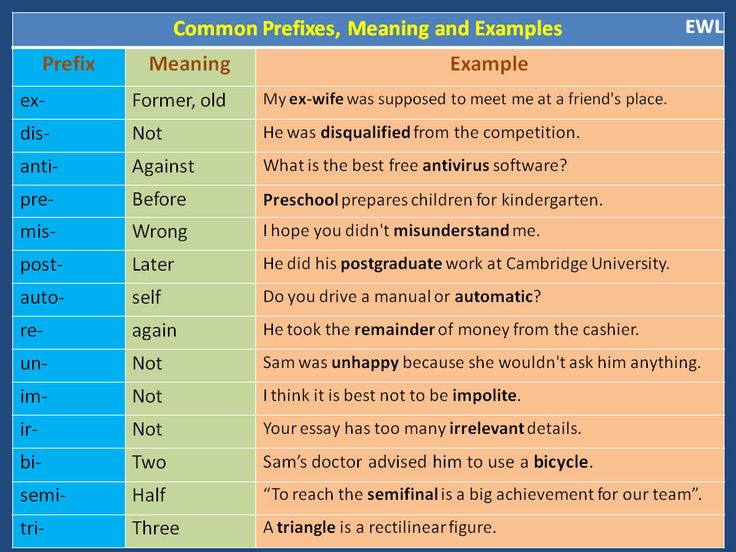
3. Fortune-telling
This is where you predict the worst possible outcome to any situation. When you go into a conversation assuming that the other person won’t like what you have to say, you change the way you communicate to usually make it come true.
4. Mind Reading
This happens when you believe that you know what other people are thinking, even though they haven’t told you directly. Taking someone’s silence as “They’re mad at me” is a perfect example of mind reading. They may just be thinking.
5. Thinking With Your Feelings
This occurs when you believe your negative feelings without ever questioning them. Feelings are very complex and often based upon our past stories. Feelings are not always about truth. Feelings are your perception of certain situations.
6. Guilt Beating
Also called shoulding on yourself, guilt beating is when you think words like should, must, ought, or have to to most situations. It’s healthier to say, “I’d like to be able to help them out” instead of “I should help them out”.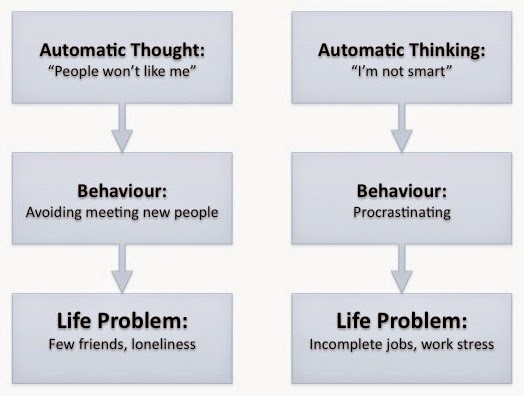
7. Labeling
Whenever you attach a negative label like jerk, arrogant, irresponsible, or stupid to yourself or to someone else, you stop your ability to take a clear look at the situation.
8. Personalizing
This happens when you invest innocuous events with personal meaning. “My boss didn’t talk to me, so I must have done something wrong.” There are lots of reasons people do things. You never fully know why people do what they do.
9. Blaming
When you blame something or someone else for the problems in your life, you become a passive victim of circumstances and you make it very difficult to do anything to change your situation.
Further Reading
If you want to read more on ANTS, this information was taken from Daniel Amen’s book Change Your Brain, Change Your Life. (I know. Its a cheezy title but its got some good stuff in it. I’d recommend it.)
Search for automatic thoughts - online presentation
Similar presentations:
Principles of Cognitive Therapy
Cognitive Behavioral Therapy
Cognitive-behavioral psychotherapy
Thoughts.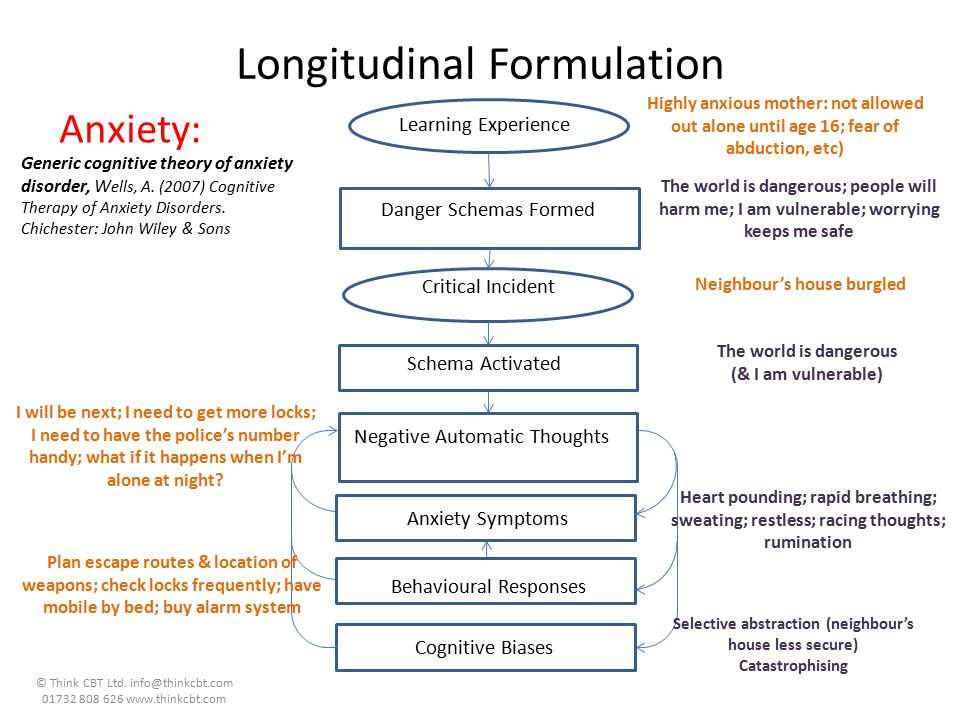 Emotional experiences. Behavior
Emotional experiences. Behavior
Cognitive-behavioral psychotherapy
Definition of the concept of psychosomatics
Methods of psychotherapy in line with Gestalt therapy
Cognitive Behavioral Therapy (CBT)
Cognitive-behavioral direction of psychotherapy
Violations of the emotional-volitional sphere
Search for automatic thoughts
.
Completed the work:
Ekaterina Gorshkova and Yuliya Suvorova
Gr.17.2-504
The main
position of cognitive psychology
“Thoughts cause feelings”
All
cognitive techniques that emerged during
the second half of the twentieth century are based
on one simple idea:
"thoughts cause feelings, and therefore many
the emotions you experience are determined by
thoughts, no matter how fleeting they may be.”
It is not events that cause feelings, but our thoughts.
Effectiveness
The search for automatic thoughts is not considered a full-fledged treatment
.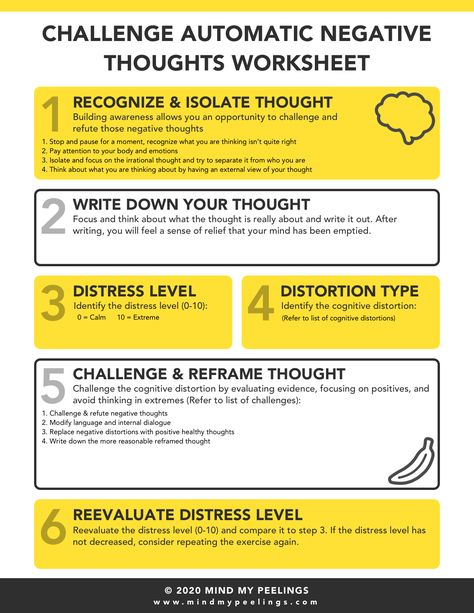 This is the first step of the
This is the first step of the
Cognitive Behavioral Therapy Training.
However, it is quite possible,
, that having understood your
reactions to unfortunate situations,
you will feel some decrease in
anxiety and anger.
Time
Most people's
search
has made significant progress as early as
during the first week of detailed
Thought Logging.
The more you practice detecting automatic thoughts
, the better you get at it.
Negative feedback
"Event
=> Thought => Feeling" is the basis of
emotional life.
But these elements can get mixed up and confused.
People's emotions do not always turn out to be a simple series of ABC -
reactions with a specific initial event and following
with thought and feeling.
Much more often, a series of ABC-reactions are combined into a feedback loop
: the final feeling of one chain of reactions becomes the initial event
of another.
In the case of painful sensations, such a negative feedback
can be established that the unpleasant feeling itself
becomes an "event", the object of further thoughts that
aggravate painful experiences, and so on - along the chain. The
cycle lasts as long as you are in anger, anxiety or a deep
depression.
The nature of automatic thoughts
Estimates
are born in the course of the endless dialogue that you
have with yourself, arise from the stream of thoughts that
plunges into the back of your consciousness. These thoughts
are fleeting, but significant enough to
provoke the strongest emotions.
Albert Ellis, a representative of the rational-emotional
direction of psychotherapy, called it an internal dialogue,
and the theorist of cognitive psychotherapy Aaron Beck -
automatic thoughts.
Automatic thoughts have the following
features:
1.
Thoughts are often shorthand.
2.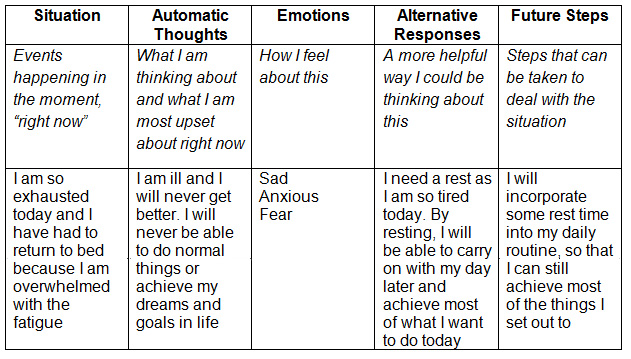
Automatic thoughts are beyond doubt, no matter how illogical they may be.
3.
Automatic thoughts are perceived as spontaneous.
4.
Automatic thoughts often have the character of an obligation—must, must, should.
5.
Automatic thoughts often show everything in the most terrible light.
6.
Automatic thoughts are relatively unique. nine0025 7.
Automatic thoughts are stable and spontaneous.
8.
Automatic thoughts often differ from your public statements.
9.
Automatic thoughts keep you stuck on the same problems.
10.
Automatic thoughts are suggested.
Write down your thoughts
In order to
understand the power of your automatic thoughts and the role they
play in your emotional life, start keeping a Thought Journal.
Thought Log allows you to rate your level of frustration by
on a scale of 0 (a feeling that does not cause suffering)
to 100 (the most painful emotion you have ever experienced).
Make several copies of this magazine and always carry one of them with
.
Fill out the Thought Journal for a week and refer to it
only when you are experiencing painful feelings. You will notice that
concentration on automatic thoughts exacerbates unpleasant emotions.
In the process of searching for automatic thoughts, you may
you will begin to doubt their truth.
Additional actions:
count thoughts
Sometimes automatic thoughts are so lightning fast and encoded that
it is impossible to recognize them, although you understand that one
of them just flashed by.
Each time you catch an automatic thought, make a mark on a special
card, which you must always carry with you.
Counting automatic thoughts will help you distance yourself from
them and give you a sense of control. Instead of taking your
automatic thoughts for dogma, you will let them go. Having counted the thought, you will not stop on it and scroll through it in your head.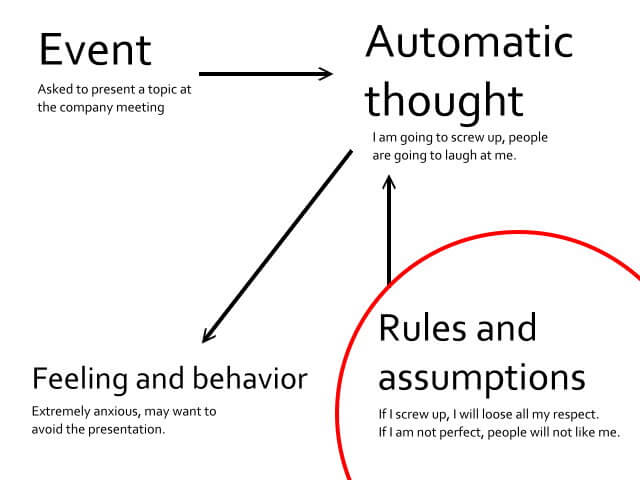
This exercise will eventually slow down your automatic thoughts
and allow you to focus on their real content.
References:
Book
M. McKay, M. Davis, P. Fanning "How
to overcome stress and depression."
English Russian Rules
2. SEARCH FOR AUTOMATIC THOUGHTS. How to beat stress and depression
2. SEARCH FOR AUTOMATIC THOUGHTS. How to beat stress and depressionWikiReading
How to beat stress and depression
McKay Matthew
Contents
2. SEARCH FOR AUTOMATIC THOUGHTS
Thoughts cause feelings. This is the basic tenet of cognitive psychotherapy. All cognitive techniques developed during the second half of the twentieth century are based on one simple idea: thoughts cause feelings, and therefore many of the emotions you experience are determined by thoughts, however fleeting they may be. nine0003
nine0003
In other words, the events themselves are not colored emotionally. The way you interpret them makes you feel one way or the other. This position is often presented in the form of the so-called "ABC-model of emotions":
A. Event => B. Thought => C. Feeling
For example:
A. Event. You get into the car, turn the ignition key, but nothing happens.
V. Thought. You explain this event to yourself: “Oh no, the battery is dead. Terrible! I'm lost - now I'll be late." nine0003
C. Feeling. You experience an emotion corresponding to your thoughts. In this case, you are extremely worried that you will be late.
Change the thought - the feeling will change. The thought, “My son must have left his headlights on overnight,” will surely make you angry. But if you thought: “Now I’ll have another cup of coffee, relax and wait for a tow truck,” you would feel only slight annoyance.
In this chapter you will learn how to stop automatic thoughts.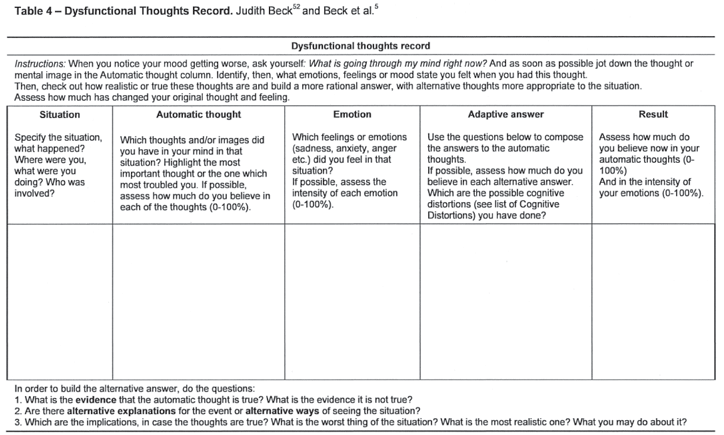 This is the basic skill of cognitive psychotherapy needed to reduce the severity of painful feelings. nine0003
This is the basic skill of cognitive psychotherapy needed to reduce the severity of painful feelings. nine0003
3rd PHASE OF THOUGHTS
3. THE THOUGHT PHASE In the thought phase, debriefing focuses on the decision-making and thinking processes. Questions that open this phase may be of the following type: • What was your first thought when you realized what had happened? (Question for witnesses of the event, rescuers,
nine0180 Reading mindsmind reading I want to surprise you with a little mind reading session. Take a look at the following illustration - Georges de Latour's famous painting "Sharp with the Ace of Diamonds" - and try to understand what is happening in it. Most likely, your eyes instinctively turned to
Mind reading
mind reading The first and most obvious question: Is it possible!? The answer is the first and most obvious: yes, but with a whole set of different “buts.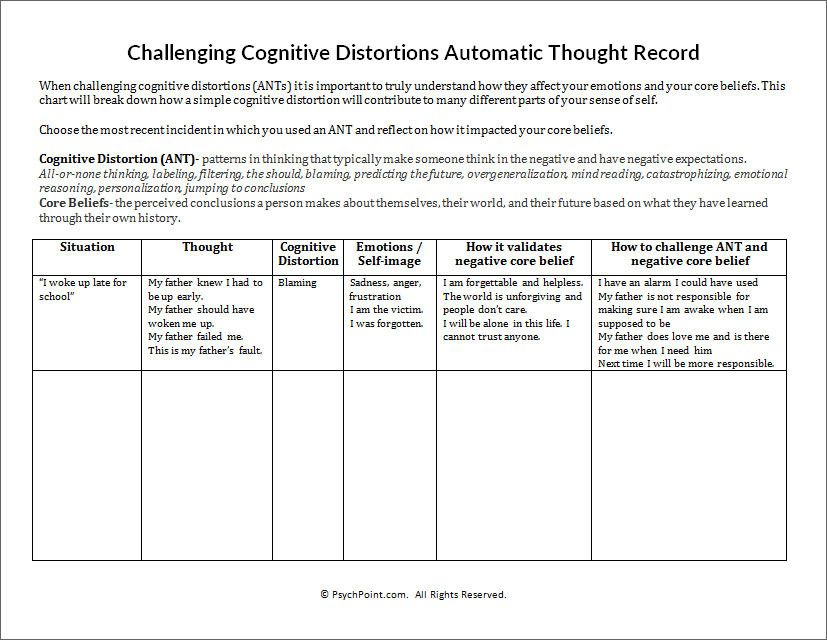 ” Within the framework of this note, I will only consider cases of “mind reading” when another person acts as a “receiver”, and not technical
” Within the framework of this note, I will only consider cases of “mind reading” when another person acts as a “receiver”, and not technical
Mind reading
mind reading The first and most obvious question: Is it possible!? The answer is the first and most obvious: yes, but with a whole set of different “buts.” Within the framework of this note, I will only consider cases of “mind reading” when another person acts as a “receiver”, and not technical
Thought recording
Recording Thoughts Little Chicken Syndrome affects not only people who find themselves in a stressful situation (hurry, missing the train, preparing for a public speech). It can show up at any moment. In the evening, in a calm atmosphere at home, you thought about something
The nature of automatic thoughts
The Nature of Automatic Thoughts You are constantly analyzing the world, attaching a label to each event or experience.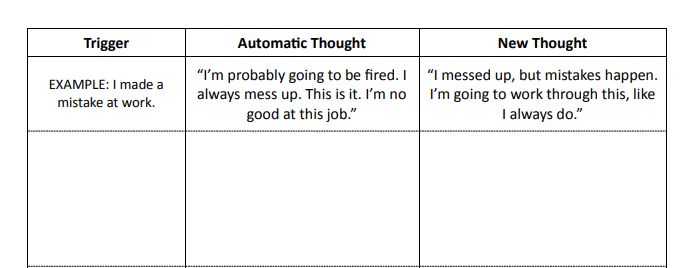 You automatically interpret everything you see, hear, touch, feel. You evaluate events as good or bad, pleasant or painful,
You automatically interpret everything you see, hear, touch, feel. You evaluate events as good or bad, pleasant or painful,
Thought Journal
Thought Journal Now that you've learned how to spot patterns of limited thinking, it's time to apply your new skill to completing the Thought Journal you started in the previous chapter. We have added three new columns to it - they are shown below. Now have
7. FIXING THOUGHTS
7. FIXING THOUGHTS The technique of fixing thoughts consists in a short concentration on an unwanted thought, and then its sudden suppression and purification of consciousness. To interrupt an unpleasant thought, the mental command “Stop!” is usually used. or click rubber
Thought Journal
Thought Journal The Thought Journal helps you identify negative core beliefs by writing down your thoughts that create unpleasant feelings.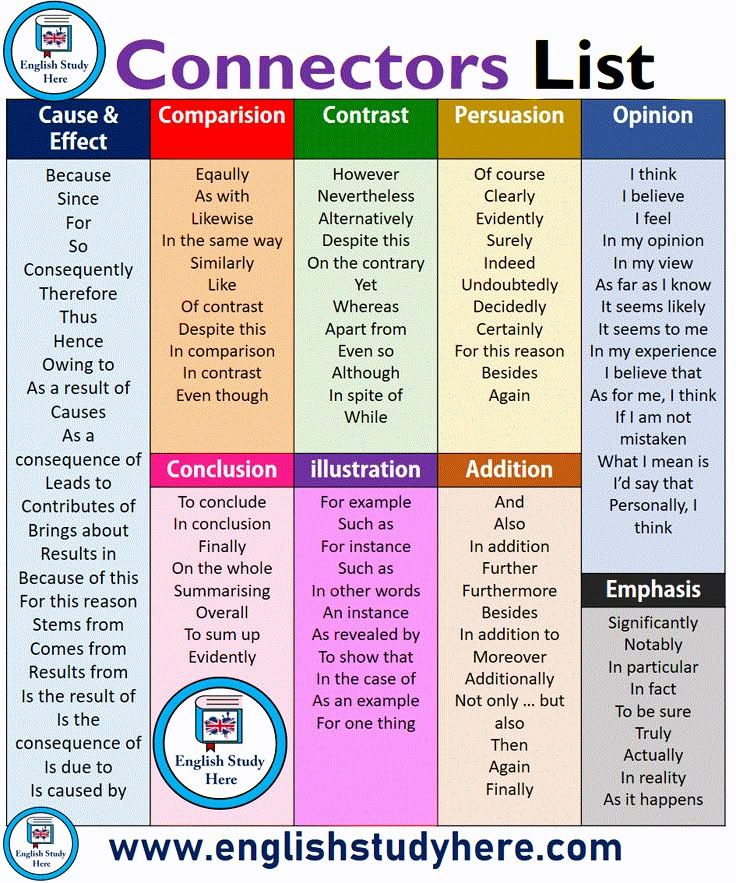 At the end of each day, think back to a situation in which you experienced irritation, sadness, pain, guilt, and so on. nine0003
At the end of each day, think back to a situation in which you experienced irritation, sadness, pain, guilt, and so on. nine0003
"MIND READING"
"MIND READING" One of the most favorite exercises of the authors, which they offer at training seminars on NLP, hypnosis and the exposure of magic, is an exercise in tracking small changes at the level of sensations (kinesthetics). In the tradition of pop hypnosis, it is
Working at the level of automatic thoughts
nine0002 Working at the level of automatic thoughts Technique: Distinguishing thoughts and facts The purpose of this technique is to develop the client's skill of differentiating facts and thoughts. Thoughts are hypotheses about the surrounding reality. They can be true or false. Even whenFinding Limiting Beliefs by Finding Where and When the Beliefs Arise
Finding Limiting Beliefs by Finding Where and When the Beliefs Arise You already know that beliefs are formed during very strong emotions.